Automotive Micro Motor Market Insights, 2032
The global automotive micro motor market size was valued at $13.3 billion in 2022, and is projected to reach $20.4 billion by 2032, growing at a CAGR of 4.4% from 2023 to 2032.
Report Key Highlighters:
- The automotive micro motor market studies more than 15 countries. The research includes a segment analysis of each country in terms of value ($ million) for the projected period 2022-2032.
- The study integrated high-quality data, professional opinions and analysis, and critical independent perspectives. The research approach is intended to provide a balanced view of global markets and to assist stakeholders in making educated decisions to achieve their most ambitious growth objectives.
- Over 3,700 product literature, annual reports, industry statements, and other comparable materials from major industry participants were reviewed to gain a better understanding of the market.
- The automotive micro motor market is highly fragmented, with several players including Johnson Electric Holdings Limited, Valeo SA, Denso Corporation, Robert Bosch GmbH, NIDEC CORPORATION, Mitsuba Corp., MABUCHI MOTOR CO., LTD., Continental AG, Brose Fahrzeugteile GmbH & Co. KG, and Buhler Group. Key strategies such as product launch, expansion, and other strategies of the players operating in the market are tracked and monitored
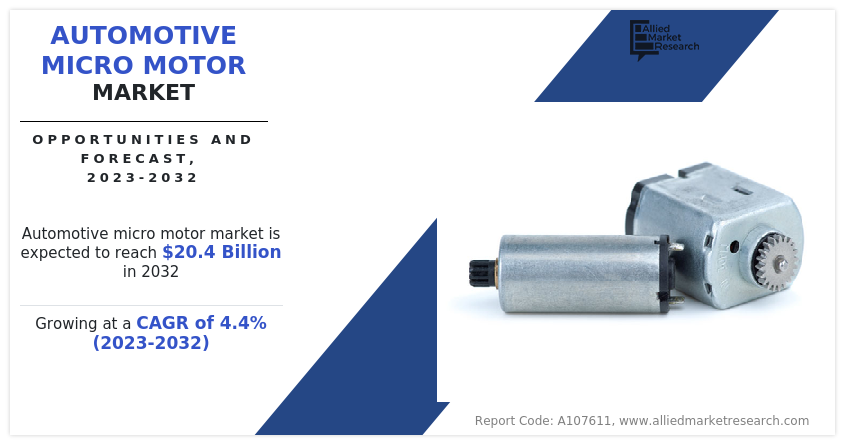
The micro motor is an electronic small-sized motor that converts electrical energy into mechanical energy. The rotor of the micro motor is driven by the current. Automotive micro motors play a crucial role in the automotive industry by converting electrical energy into mechanical energy to power various devices in a vehicle. Micro motors are used for functions such as wipers, electric pumps, coolant pumps, cooling fans, and others.
With the constant development in the automobile industry and the rise in the need to focus on passenger comfort and automatic controls, micro motors have become essential components in modern vehicles. Cars may have over 20 micro motors, powering movements such as seat adjustments, mirror swings, headlamp washing, window operations, and more. These micro motors are designed to be small and efficient, utilizing advanced permanent magnet materials that offer strong magnetic capabilities, resulting in powerful and compact motors. The use of such micro motors helps reduce overall weight, increasing the vehicle's carrying capacity.
Factors such as increase in the demand for comfort and convenience features in vehicles, and surge in the adoption of vehicle connectivity system and advanced driving assistance systems, and growing focus on energy efficiency and sustainability accelerate the growth of the automotive micro motor market. However, technological challenges and high capital investment are anticipated to hamper the market growth. On the other hand, rise in the adoption of electric vehicles and development of autonomous vehicles provide a siginificant growth opportunity for the market players operating in the automotive micro motor industry.
The automotive micro motor market is segmented on the basis of type, power consumption, technology, application, and region. By type, the market is divided into AC and DC. As per power consumption, it is classified into below 11 V, 12 - 24 V, 25 – 48 V, and above 48V. According to technology, it is divided into brushed micro motor and brushless micro motor. Depending on application, it is classified into power window motor, wiper motor, seat adjustment motor, heating, ventilation, and air conditioning (HVAC) motor, power steering motor, and others. Region wise, the market is analyzed across North America, Europe, Asia-Pacific, and LAMEA.
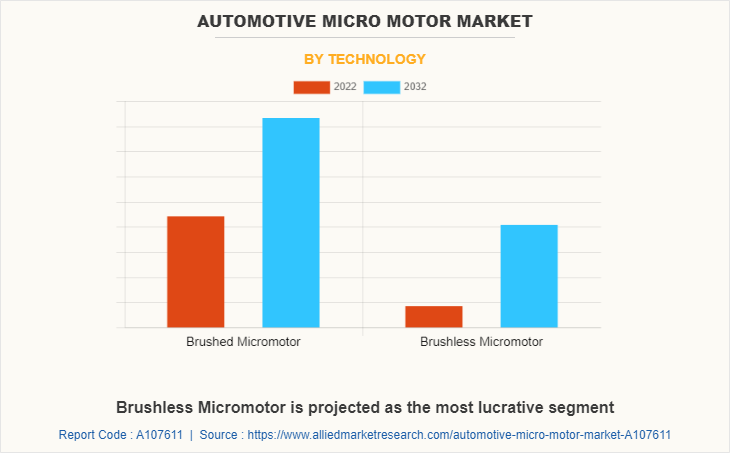
The leading companies profiled in the automotive micro motor market report include Johnson Electric Holdings Limited, Valeo SA, Denso Corporation, Robert Bosch GmbH, NIDEC CORPORATION, Mitsuba Corp., MABUCHI MOTOR CO., LTD., Continental AG, Brose Fahrzeugteile GmbH & Co. KG, and Buhler Group.
In the Asia-Pacific region, which includes countries such as China, India, Japan, South Korea, and others, there is a significant surge in the adoption of electric vehicles (EVs). Governments and automakers in this region are actively promoting the use of EVs. Micro motors play a vital role in EVs for functions such as regenerative braking systems and charging mechanisms. The increasing demand for micro motors in the EV sector is driving the growth of the automotive micro motor market. Furthermore, manufacturers are increasing the automotive micro motor market share in the automotive micro motor industry by introducing advanced and innovative micro motor solutions that offer superior performance, reliability, and efficiency.
Micro motors are widely used in steering wheel adjustment systems to facilitate precise and seamless adjustments for driver comfort. For instance, in August 2022, Johnson Electric announced the launch of its steering wheel adjuster motor. This new motor is designed to make long driving experience more comfortable allowing drivers to ingress and egress with ease.
With their small size, these motors deliver the power and control required to move the steering wheel in various directions, including up, down, forward, and backward. By ensuring precise and responsive adjustments, micro motors enable drivers to easily find their desired steering wheel position. This enhances both driving comfort and ergonomics, providing a tailored driving experience that accommodates individuals of different heights and preferences.
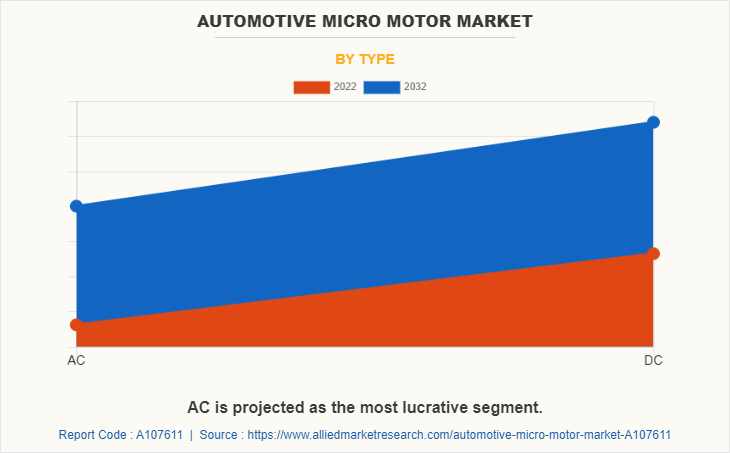
Rise in demand for comfort and convenience features in vehicles
The increasing consumer demand for comfort and convenience features in vehicles is significant for the growth of the automotive micro motor market. These features require the integration of various motor-driven systems to enhance the overall driving experience. For instance, micro motors play a crucial role in electric power steering systems, enabling improved control and maneuverability. HVAC systems rely on micro motors to regulate the airflow, temperature, and distribution within the vehicle cabin, ensuring optimal comfort for passengers. In addition, micro motors are essential for operating power windows, automated seat adjustments, electric sunroofs, and electric parking brakes, providing precise and reliable control for these convenience features.
To meet the growing demand for comfort and convenience, the automotive industry is investing in the development of advanced micro motor technologies. These advancements aim to deliver higher power output, compact designs, improved efficiency, and enhanced control precision to meet the requirements of these feature-rich systems. Overall, the rise in demand for comfort and convenience features is driving the automotive micro motor market, pushing for continuous innovation and development in micro motor technology to meet the evolving needs of consumers.
Increase in trend of connectivity, and advanced driving assistance systems.
Vehicle connectivity involves integrating vehicles with internet-connected devices and services, facilitating improved communication, access to information, and entertainment options. Moreover, as vehicles become increasingly connected, micro motors play a crucial role in enabling the smooth operation of various systems that support connectivity. This includes powering automated door locking mechanisms, electric parking brakes, and autonomous driving systems, ensuring seamless integration and optimal functionality of these advanced features. Advanced Driver Assistance Systems (ADAS) technologies are designed to enhance safety, comfort, and convenience by offering features such as adaptive cruise control, lane-keeping assist, and collision avoidance.
The rising demand for connectivity and ADAS in vehicles creates a greater need for micro motors in the automotive industry. Micro motors play a vital role in enabling the seamless operation of connected features and supporting the functionalities of advanced driver assistance systems. As a result, the growth of connectivity and ADAS directly contributes to the expansion of the automotive micro motor market, driving increased demand and fostering innovation in micro motor technology.
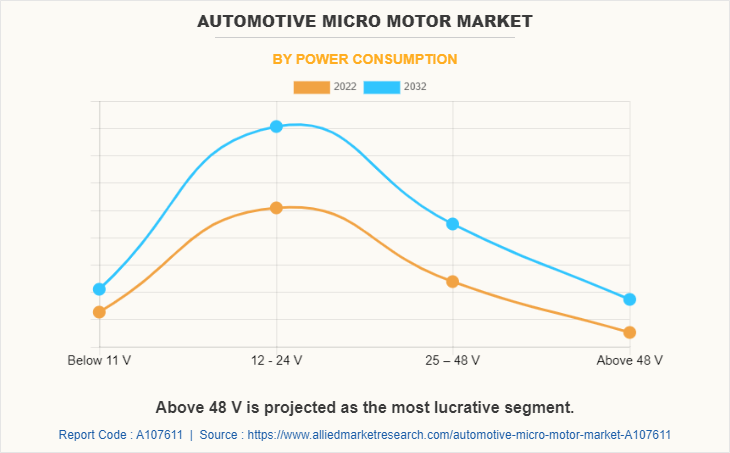
Technological challenges
Technological challenges within the automotive micro motor market stem from factors such as technical limitations, complexity, and the constant need for innovation. These challenges include achieving miniaturization without compromising performance, ensuring the durability and reliability of micro motors under demanding conditions, and effectively integrating them with other vehicle systems. Integration and compatibility with other vehicle systems and components also present challenges. Furthermore, micro motors need to seamlessly interact with electronic systems, sensors, and control units to enable smooth operation and coordination. Achieving this requires complex engineering solutions and effective communication protocols.
High capital investment
The automotive micro motor market faces obstacles to its growth due to the high capital investment required. The significant financial resources required to enter the market deter new companies and startups, limiting competition and innovation. The costs related to research, development, manufacturing, and commercialization act as barriers, hindering the entry of potential players. Furthermore, the substantial capital investment in the market leads to limited resources for research and development (R&D) activities. Insufficient funding for R&D slows down technological advancements and delays the introduction of improved micro motor solutions.
This hampers innovation, the ability to enhance performance, and the responsiveness to evolving customer demands. Therefore, the high capital investment in the automotive micro motor market acts as a barrier for new entrants, restricts resources for R&D, and poses challenges for scaling production. These factors collectively impede market growth by limiting competition, hindering innovation, and compromising the ability to meet market demands.
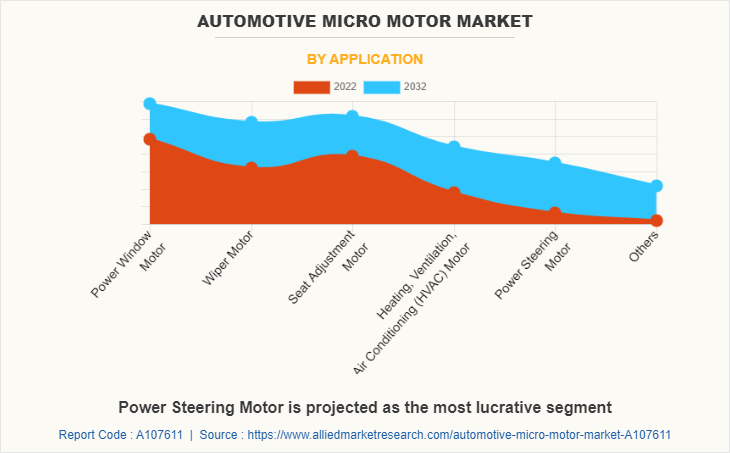
Surge in adoption of electric vehicles
Growing global awareness and concern for environmental issues, such as climate change and air pollution, have prompted governments and regulatory bodies to impose stricter emissions standards and offer incentives. This promotes the use of electric vehicles as a sustainable and eco-friendly alternative to traditional internal combustion engine vehicles.
Automakers are making substantial investments in research and development for electric vehicles, resulting in a wider range of models with enhanced features and capabilities. The surge in electric vehicle adoption directly stimulates the growth of the automotive micro motor market. Micro motors play a crucial role in electric vehicles, supporting various functions and systems, including, battery management, HVAC, infotainment, and safety systems. Micro motors are used in components such as electric power steering systems, electric brake systems, electric coolant pumps, and others. As the demand for electric vehicles rises, the demand for micro motors increases which provides significant opportunities for the growth of the market.
Recent Developments
- In February 2023, NIDEC CORPORATION established its first subsidiary in the city of Dalian in China. Through this subsidiary it started mass-production of DC and fan motors for personal computers and automotive motors, among other products.
- In August 2022, Johnson Electric Holdings Limited launched steering wheel adjuster motor that provides more comfortable long drive experience and allows drivers to ingress and egress with ease.
- In March 2022, Johnson Electric Holdings Limited launched ECI-043 brushless motor platform that provides high torque low speed applications and delivers a stable torque output with a high level of controllability.
- In August 2021, Johnson Electric Holdings Limited launched smart braking electric brake booster motor that measurably shortens emergency braking distances that improves vehicle energy efficiency.
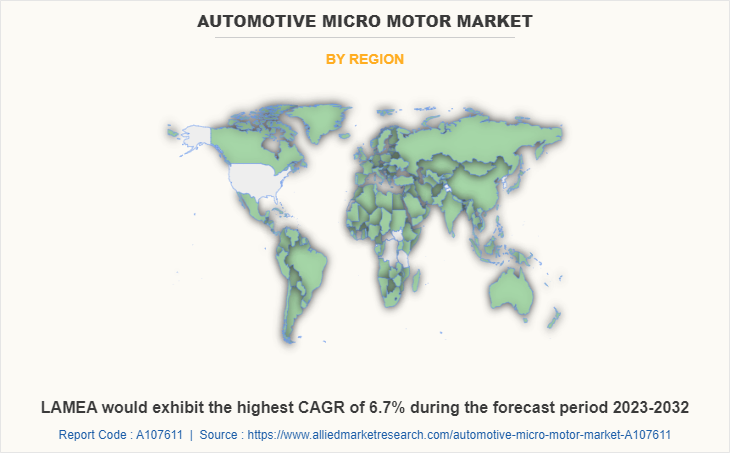
.
Key Benefits For Stakeholders
- This report provides a quantitative analysis of the market segments, current trends, estimations, and dynamics of the automotive micro motor market analysis from 2022 to 2032 to identify the prevailing automotive micro motor market opportunities.
- The market research is offered along with information related to key drivers, restraints, and opportunities.
- Porter's five forces analysis highlights the potency of buyers and suppliers to enable stakeholders make profit-oriented business decisions and strengthen their supplier-buyer network.
- In-depth analysis of the automotive micro motor market segmentation assists to determine the prevailing market opportunities.
- Major countries in each region are mapped according to their revenue contribution to the global market.
- Market player positioning facilitates benchmarking and provides a clear understanding of the present position of the market players.
- The report includes the analysis of the regional as well as global automotive micro motor market trends, key players, market segments, application areas, and market growth strategies.
Automotive Micro Motor Market Report Highlights
| Aspects | Details |
| Market Size By 2032 | USD 20.4 billion |
| Growth Rate | CAGR of 4.4% |
| Forecast period | 2022 - 2032 |
| Report Pages | 297 |
| By Technology |
|
| By Type |
|
| By Power consumption |
|
| By Application |
|
| By Region |
|
| Key Market Players | Robert Bosch GmbH, MABUCHI MOTOR CO., LTD., Buhler Group, NIDEC CORPORATION, Brose Fahrzeugteile GmbH & Co. KG, Continental AG, Valeo SA, Denso Corporation, Mitsuba Corp., Johnson Electric Holdings Limited |
The estimated industry size of automotive micro motor is $13.3 billion in 2022.
The top companies to hold the market share in automotive micro motor are Johnson Electric Holdings Limited, Valeo SA, Denso Corporation, Robert Bosch GmbH, NIDEC CORPORATION, Mitsuba Corp., MABUCHI MOTOR CO., LTD., Continental AG, Brose Fahrzeugteile GmbH & Co. KG, and Buhler Group.
The largest regional market for automotive micro motor is Asia-Pacific.
The leading application of automotive micro motor market is power window motor.
The upcoming trends of automotive micro motor market in the world are surge in adoption of electric vehicles, and growing popularity of autonomous vehicles.
Loading Table Of Content...
Loading Research Methodology...



